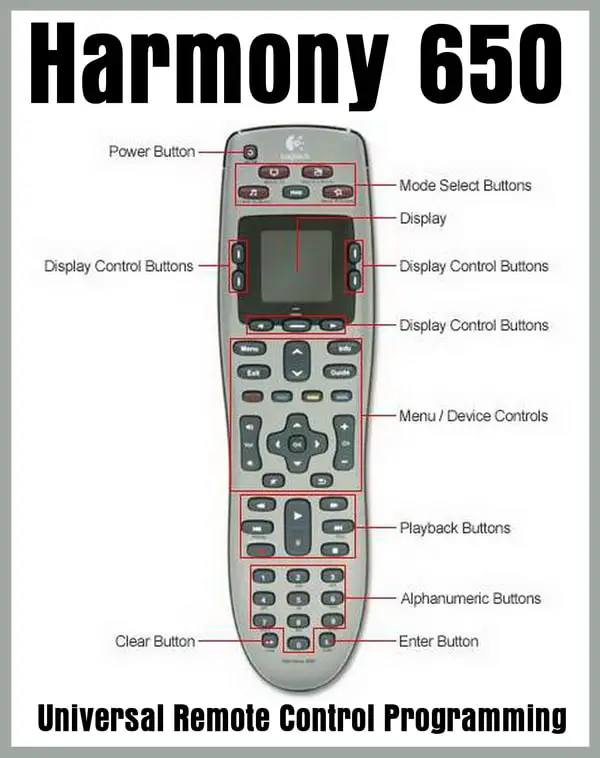
Breaking News
Main Menu
How To Program The Logitech Harmony 300 Codes
вторник 18 декабря admin 11
Looking for help setting up your Harmony 300? We recommend visiting our getting started page. Harmony 300 Getting Started Guide An overview of the Harmony remote, with quick steps and tips to get started.
For many years, I've used the Harmony 659 universal remote to control different systems in my house. It began as my controller and proved itself worthy of the task; however, when a room redesign demanded an RF-capable controller for the primary HT setup, the 659 moved to my living room, where it was asked only to control a basic system consisting of a TV,, and Blu-ray player.
After several good years in that role, the remote is now close to its last breath. The screen has been damaged, and a couple of buttons fail to work reliably. I'm ready for an upgrade; and, as much as I would like that upgrade to be from the Harmony family, I don't want to spend very much money.especially given the system's simplicity. Additional Resources • Read from the staff at HomeTheaterReview.com. • Find,, and to program into the Harmony 300. India.
Needless to say, I was excited when a trip to Logitech's website revealed the Harmony 300, which actually came out about a year ago but somehow managed to fly under my radar. The least expensive universal remote in, the 300 has an MSRP of $39.99, but I picked one up at Target for $24.99. The Harmony 300 has a traditional handheld design with 55 hard buttons and no LCD screen. This is an IR remote that requires line-of-sight with your devices; it will not work with the optional Harmony RF modules. The remote measures about 9 inches long by 2.5 inches wide (at its widest point), weighs about 10 ounces, and uses two AA batteries (a pair is included in the box); this model lacks the rechargeable battery and base station that you get with many higher-end remotes.
The Harmony 300 can control four A/V products; its device buttons are labeled TV, Cable/Sat, DVD, and VCR/Aux. The emphasis is definitely on a TV/set-top box combination. Harmony remotes are perhaps best known for their activity buttons, including Watch TV, Watch a DVD, and Listen to Music: Press one of these buttons, and the remote will cue up all of the necessary devices and configure the proper settings to deliver what you want to see or hear. In this case, the 300 has just one activity button: Watch TV. Pressing the Watch TV button will power on your TV and cable/satellite box and handle your channel-surfing/DVR needs, while locking volume control to the TV set.
Press the button again, and it will power off both devices. The Harmony 300 is still able to control your Blu-ray, DVD, or music player, but you'll have to cue up those devices without the aid of a one-click button. The Harmony 300's programming method follows the same general approach as other Harmony remotes, using an online setup tool that's extremely user-friendly (unless, of course, you don't have a computer and/or Internet connection). The setup wizard, which works on a Mac or PC ( is what first drew me to Harmony all those years ago), requires that you create an account, connect the remote to your computer via the supplied USB cable, and list the A/V devices in your system. The system contains codes for over 225,000 devices from more than 5,000 brands, and it will automatically find the right code for your device.
If there are multiple possibilities, it may ask you to press some buttons on your original remote to determine the correct code set. Then, it assigns functions to the necessary buttons on the 300.

The final step is to load the program onto the remote by hitting the sync option. If you've ever owned a higher-end Harmony model, you will notice that Logitech has slightly tweaked the online interface and setup process, omitting advanced steps like describing how the various components are connected. This revised setup wizard better suits the simplicity of the 300 without omitting the ability to tailor the remote to your needs. Even though the Harmony 300 lacks a customizable screen, you can change the functionality of various buttons through a simple drag-and-drop process. For the most part, the Harmony 300 did exactly what I wanted it to do after performing the initial setup, but I did make a couple of minor modifications. I added aspect ratio control for my TV to an open button and changed the Menu button for Blu-ray from Pop-Up Menu to Top Menu. The TV Input button did not work correctly, so I had to teach the system the correct code for that function; again, this was very easy to do, with clear instructions.